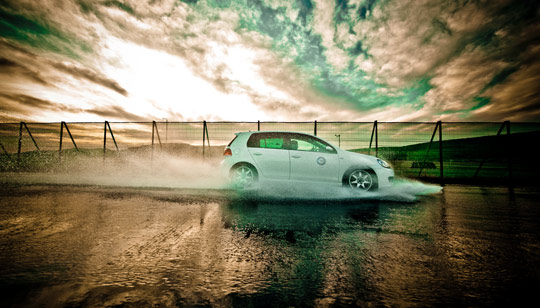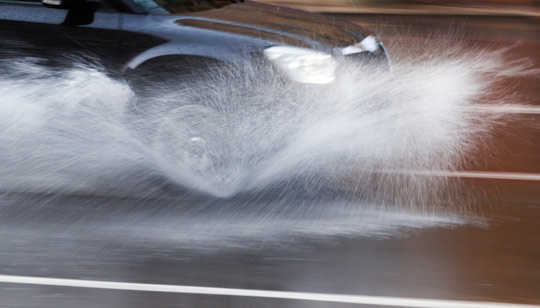Driving in the Wet
Properly preparing yourself and your vehicle can give you a better driving experience and keep you safe when driving in wet and rainy conditions.
Preparing to drive in wet conditions
Before you head out, be sure to check on the condition of your vehicle and your tyres.
- Tyres should have plenty of tread depth to evacuate standing water from between the road surface and your tyre. If your current tyres are worn down to anywhere near the wear bars (2.5mm or 3.0mm), it’s time to think about replacing your tyres.
- Tyre pressures that are too low or too high can lead to reduced traction, premature tread wear, or tyre damage. Check your tyre pressure regularly (at least once a month) to make sure they’re properly inflated.
- Being able to see the road in wet conditions is critical to a safer driving experience. Your vehicle’s wiper blades should also be checked for age and wear. If they leave streaks on your windshield, it’s time for a change.
- It’s also important to make sure your vehicle can be seen in wet conditions. Turn on your lights and make sure that all of them are in working order.

Tips for driving in wet conditions
When it’s time to head out, keep a few of these tips in mind.
- If your windows are fogging up, use the air conditioner to dehumidify the air inside of your vehicle. If you don’t have an air conditioner system, wind down your rear windows a little to allow air to circulate.
- Slowing down on wet roads is crucial. Wet roads give you less grip, increase your braking distance and reduce your ability to properly steer around obstacles.
- Keep a further distance from the car in front of you since braking distances are longer on wet roads. Staying back also keeps you away from the tyre spray of the vehicle in front, giving you better visibility.
- Jerky or sudden change in steering direction can lead to loss of control, especially on rain-slicked roads so drive with smoother steering.
- If the rain becomes too heavy and you are uncomfortable with your visibility, stop! Heavy rain can overload your wiper blades, causing a constant sheet of water to flow over the screen, making visibility close to zero.
- Initial rain fall makes the road very slippery as the mud and oil on dry roads combines with the water to form a rather slippery layer. You’re likely to experience a loss of control so be extra careful for the first half-hour after it begins to rain.
- Allow some time for your brakes to dry after driving through standing water by tapping your brake pedals lightly.

